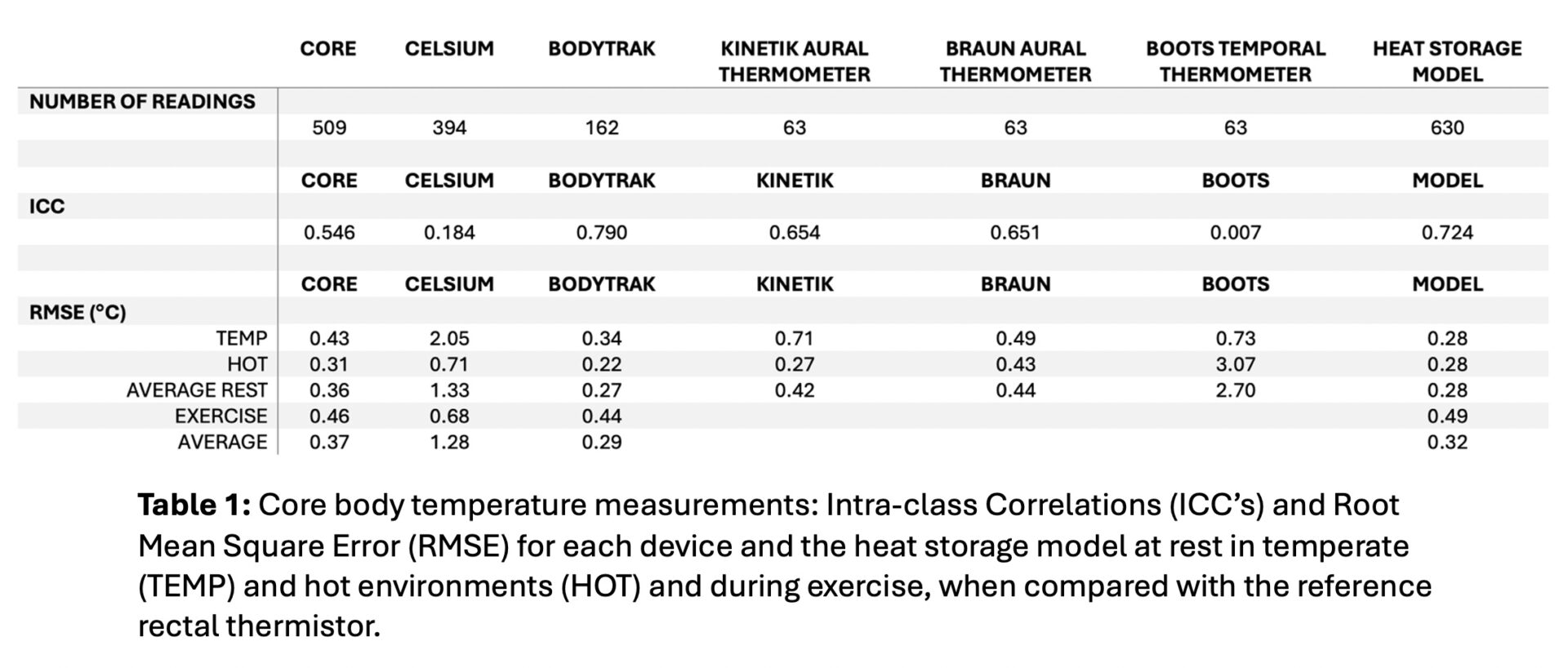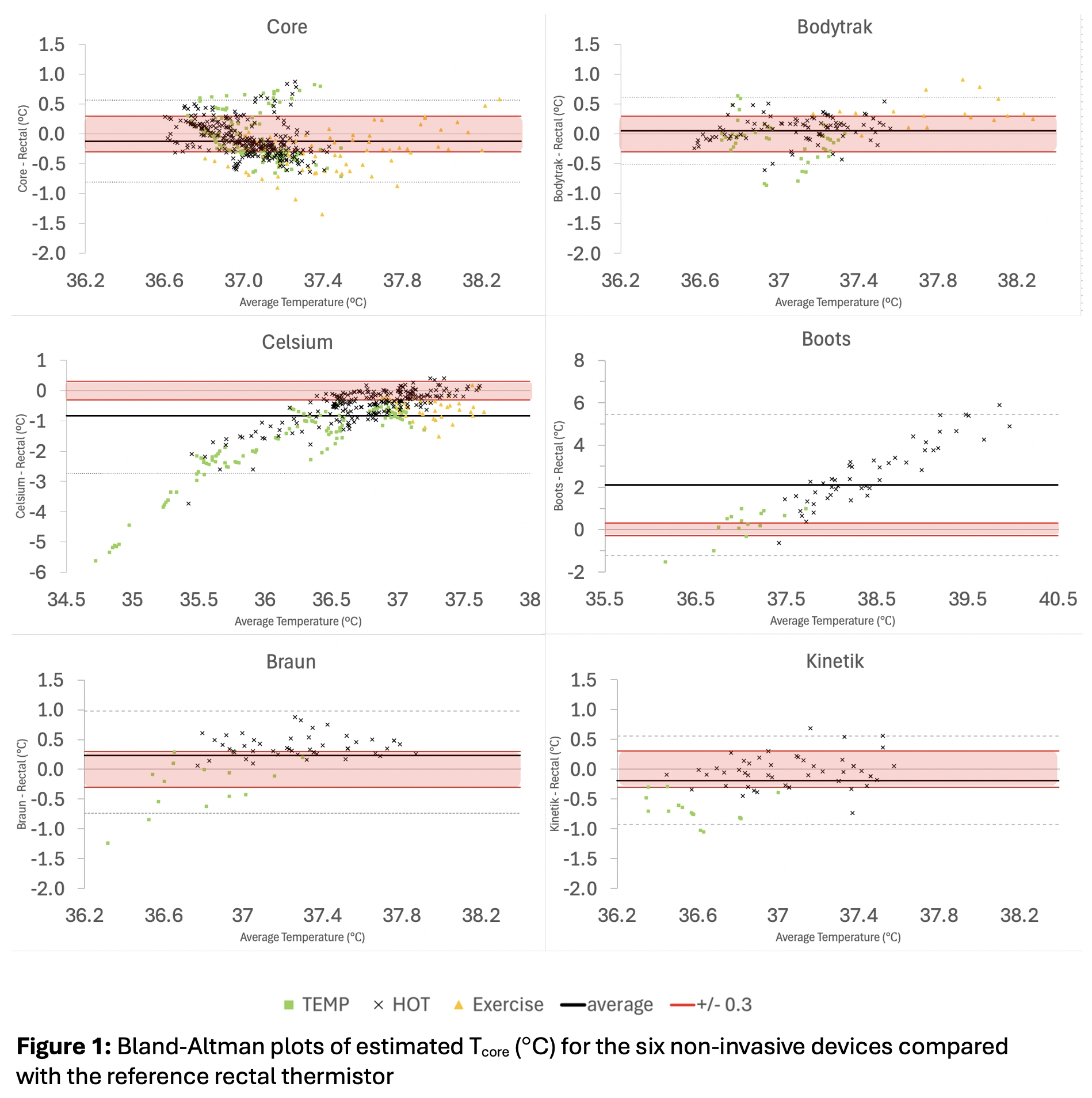Introduction: We investigated the accuracy of six non-invasive devices for measuring the body core temperature (Tcore) of people while at rest and during exercise, at cooler and hotter temperatures.
Methods: Thirty participants rested for 30 min in ambient conditions of 25°C / 45% relative humidity (RH) and 60 min at 50°C and 25% RH, followed by a 20-minute bout of cycling at 50°C, at a mean power output of 1.7 W/Kg. Rectal temperature (Trec) was measured throughout, and body core temperature was estimated using three non-invasive wearable devices and three spot-check devices (two aural thermometers and one temporal IR scanner). Bland-Altman plots were used to compare each device with Trec and, alongside root mean square error (RMSE) and intra-class correlations (ICCs), were used to assess device accuracy. Device estimates of Tcore were considered sufficiently accurate if they were within a range of error of ± 0.3°C at each stage of the protocol (the requirement to be certified as a class IIa medical thermometer). The accuracies of all devices were then compared to Tcore estimated from heat storage equations (https://www.nicholasravanelli.ca/hutas/ (Parsons, 2014; Ravanelli et al., 2019)).
Results: The estimates of Tcore from all six devices differed substantially from the rectal thermistor reading (Fig. 1). Only one device demonstrated an acceptable overall agreement with Trec (ICC = 0.790; RMSE = 0.29°C (Table 1)), due to its accuracy at rest (RMSE = 0.27°C). However, the device was inaccurate during exercise and for some participants overestimated by more than 0.5°C, with a RMSE of 0.44°C. All other devices returned an error of over 0.3°C during both rest and exercise. Across devices, mean accuracy was lower during exercise than at rest (RMSE: 0.32 vs. 0.57°C) and the heat storage equations for Tcore were more accurate than five of the six devices, with a RMSE of 0.32°C.
Discussion and Conclusions: The primary finding of this study is that the wearable and spot-check devices did not accurately estimate Trec, particularly during exercise when Tcore was elevated. A predictive heat storage model proved to be more accurate in most cases, which is particularly damning evidence for the efficacy of non-invasive devices. Spot-check devices such as aural and temporal thermometers are routinely used in many acute medical scenarios, but in the present study were less accurate at rest than two of the wearables. Typically, accuracy decreased during exercise, likely due to the rate of change in input variables (skin temperature, heart rate and heat flux) to the device algorithm not correlating with the changes in Tcore. This was further hindered by reduced contact between the devices and the skin from motion and skin wetness.


